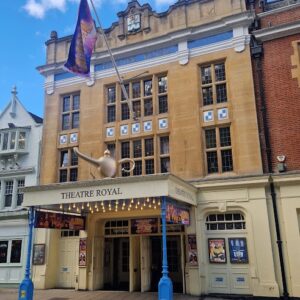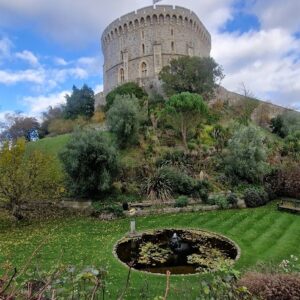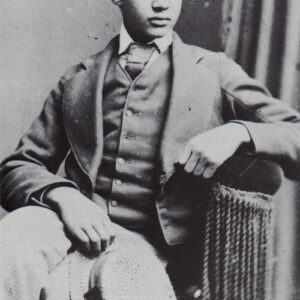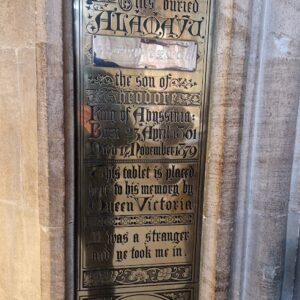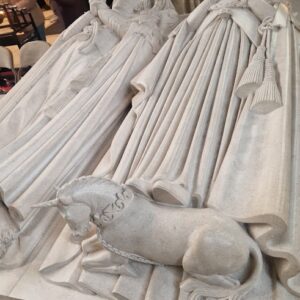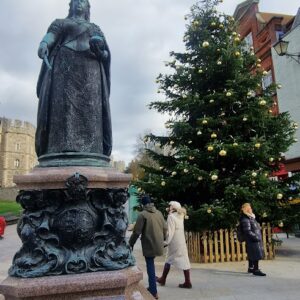King George V’s Royal Proclamation of 17th July 1917 ordered that the royal family of Great Britain would in future be named after Windsor Castle.
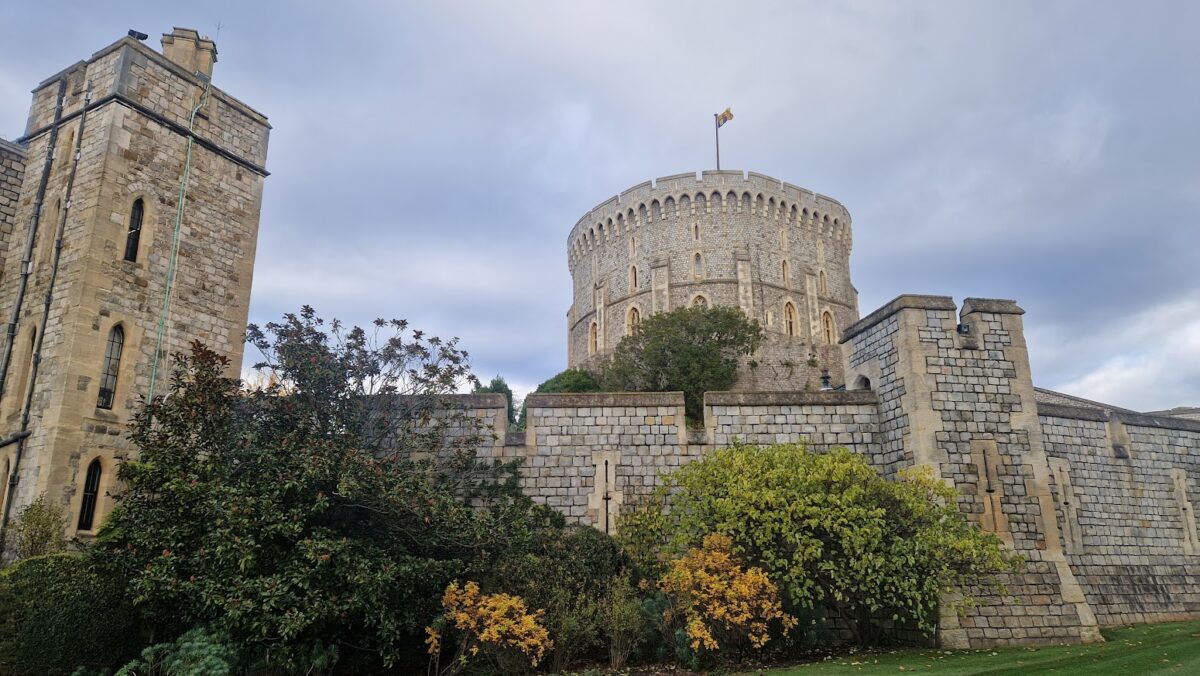 Travelogue by Robert Čoban
Travelogue by Robert Čoban
Spanning 45,000 square metres, Windsor Castle is the biggest, permanently occupied castle in Europe, with numerous British monarchs buried in its chapel, last but not least of them being Queen Elizabeth II. A young Ethiopian prince lies there too, whose grave hides a sad and tragic story.
It was March 1917 when German Gotha G. IV planes began crossing the English Channel and disseminating death in London and other island cities. This aircraft brand was unpleasantly associated with the German surname of the then-ruling British dynasty – Saxe-Coburg and Gotha. The anti-German mood in the country, but also the fear that after the overthrow of his cousin, the Russian Emperor Nicholas II, a wave of anti-monarchist sentiment would sweep across the rest of Europe, forced the British King George V to make a radical decision. He announced in the Royal Proclamation on 17th July 1917 that the ruling family of Great Britain would be named after Windsor Castle in the future. Thus, the German dynasty of Saxe-Coburg and the Goths, which came to Great Britain with Prince Albert, Queen Victoria’s husband, went down in history forever. The satirical weekly “Punch” illustrated the event with a cartoon titled “The Great Preparation” showing King George V sweeping the crowns with a broom above which is written “Made in Germany”.
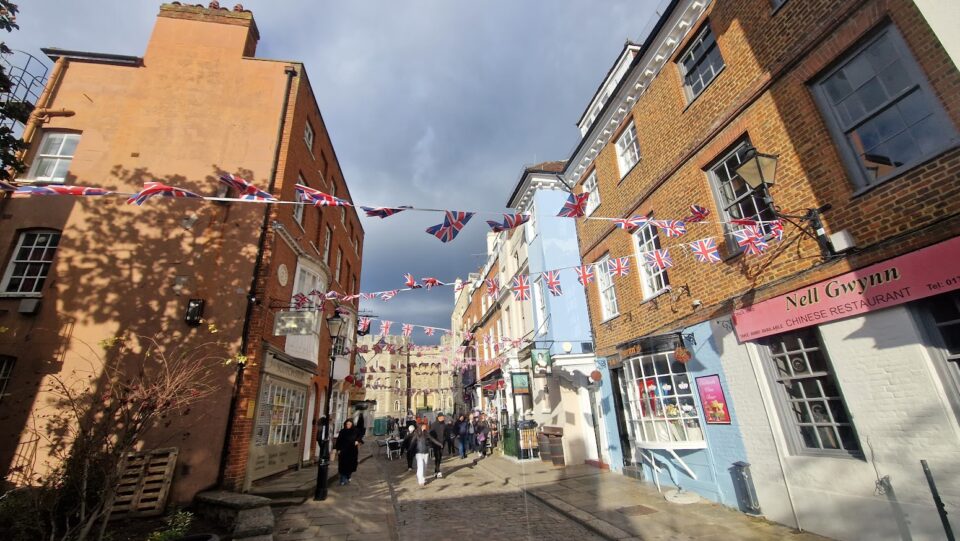 The sixth season of the popular Netflix series “The Crown” brought the British royal family back into the spotlight, so I decided to visit Windsor Castle.
The sixth season of the popular Netflix series “The Crown” brought the British royal family back into the spotlight, so I decided to visit Windsor Castle.
After a one-hour train journey from Waterloo station in London, I arrived in the small town of Windsor. I left the railway station and found myself under the very walls of the castle. As I climbed the steep road towards the town centre, I passed numerous monuments that speak of Windsor’s rich history. Christian Victor, who was the grandson of Queen Victoria, was born in Windsor Castle in 1867 and died of malaria in Pretoria, South Africa in 1900 at the age of 33. A memorial to the Major of the Royal Infantry Corps who took part in numerous battles from India and Sudan to the Gold Coast in Africa, was erected by his friends and comrades. Right next to it is a monument dedicated to King George V “the first ruler of the House of Windsor”. I passed by the Royal Theatre, where the play “Aladdin” was performed. The windows of the souvenir shops were filled with postcards, plates and mugs with the images of deceased and living members of the Windsor royal family, as well as figurines of Queen Elizabeth II, King Charles III and the Queen’s favourite dogs – corgis. The town centre is adorned with a large monument to Queen Victoria and next to it a Christmas tree.
The town of Eaton is known for its famous all-boys school, Eton College, where 20 British Prime Ministers and many members of the royal family, including Princes William and Harry, were educated.
Across the bridge, on the other side of the Thames, leaning against Windsor is the town of Eton, known for the famous all-boys school, Eton College, where 20 British Prime Ministers and many members of the royal family, including Princes William and Harry, were educated. Eton is attended by students aged 13 to 18 and has more than 1,300 students housed in 25 residences. The annual tuition is £46,000. The network of acquaintances made at Eton is often useful in later careers, while former students are called Old Etonians. Many specialized magazines have named Eton the best private school for young men in the UK. Almost all students continue their education at universities after graduation, and a third enrol in two most prestigious English universities, Oxford and Cambridge.
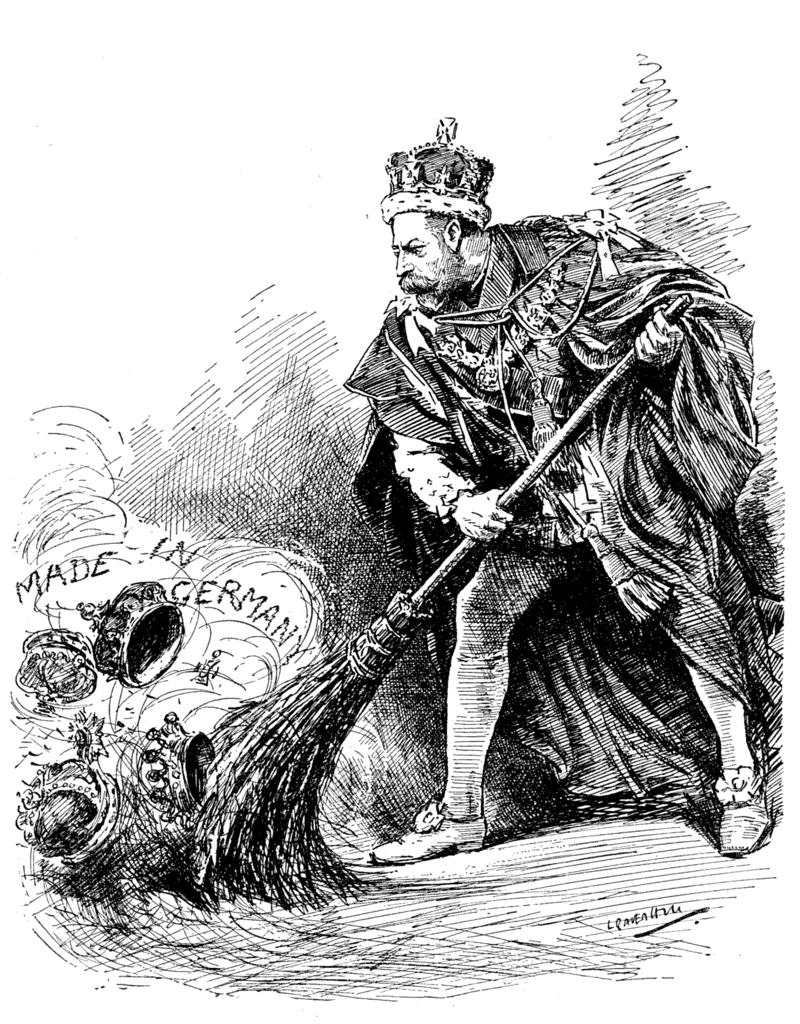
After passing extensive security, I entered Windsor Castle, which was built on this site by William I the Conqueror after the Norman invasion in the 11th century. Spanning 45,000 m2, it is considered the largest permanently occupied castle in the world.
It was built on man-made high ground strategically important for controlling the River Thames and the main road to London. It was originally surrounded by a wooden palisade and a moat, and later, during the reign of Henry I, stone walls were built around it. Since then, this castle has become the residence of the British rulers, which makes it also the longest inhabited castle in Europe. In the 13th century, King Henry III built a luxurious palace within the castle complex, while Edward III rebuilt the castle, which was the most expensive construction project of a non-religious character in medieval England. The St. George Chapel was erected within the castle in the 15th century and this is the place where many British monarchs were buried, the last among them Queen Elizabeth II. During the Tudor reign, the castle retained its appearance, but Henry VIII and Elizabeth I increased the importance of this castle, as they used it to hold all important diplomatic events.
Prince Alemayehu, the son of the Ethiopian Emperor Tewodros II, was buried in the Windsor Castle chapel.
During the English Civil War, it was used as the headquarters of the Parliamentarian army and as the place where Charles I was kept in custody. Charles II reconstructed most of the castle with the help of architect Hugh May. After a period in which the castle was poorly maintained, George III and George IV reconstructed the palace of Charles II in the 18th century and thus gave it its present appearance. Queen Victoria made only minor changes to the castle, which hosted receptions for various festivities during most of her reign. During the aerial Battle of Britain in World War II, the royal family took refuge in it.
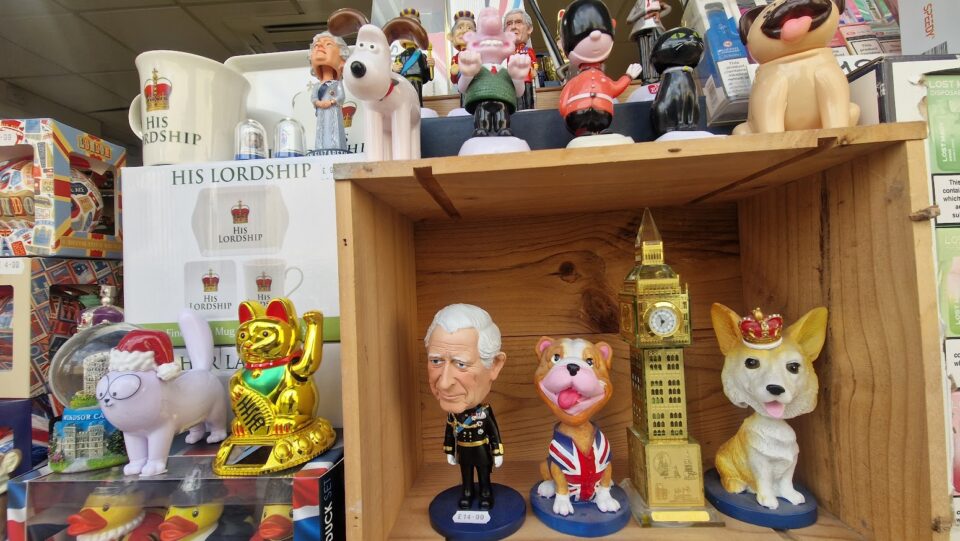 Windsor Castle was badly damaged in a fire on 20th November 1992 when a curtain draped over one of the light bulbs caught fire in the Queen’s private chapel. The fire lasted 15 hours and completely destroyed the famous St. George’s Hall and the surrounding premises of the castle. In a speech on the occasion of the 40th year of her reign, Queen Elizabeth II called 1992 “annus horribilis” (a horrible year). Namely, the fire at Windsor Castle was just the latest in a series of bad news for the royal family during that year. First, in January, photos of the love affair between Princess Sarah, the wife of the Queen’s second son Andrew, and her Texan lover Steve Wyatt were published. Sarah and Andrew divorced soon after that. The Queen’s only daughter, Princess Anne, and her husband, Mark Phillips, also officially divorced, while Diana, Princess of Wales published a biographical book, “Diana: Her True Story,” in which she spoke publicly for the first time about Charles’ relationship with Camilla. In August of the same year, the details of secretly recorded intimate conversations between Princess Diana and her lover James Gilbey were published too.
Windsor Castle was badly damaged in a fire on 20th November 1992 when a curtain draped over one of the light bulbs caught fire in the Queen’s private chapel. The fire lasted 15 hours and completely destroyed the famous St. George’s Hall and the surrounding premises of the castle. In a speech on the occasion of the 40th year of her reign, Queen Elizabeth II called 1992 “annus horribilis” (a horrible year). Namely, the fire at Windsor Castle was just the latest in a series of bad news for the royal family during that year. First, in January, photos of the love affair between Princess Sarah, the wife of the Queen’s second son Andrew, and her Texan lover Steve Wyatt were published. Sarah and Andrew divorced soon after that. The Queen’s only daughter, Princess Anne, and her husband, Mark Phillips, also officially divorced, while Diana, Princess of Wales published a biographical book, “Diana: Her True Story,” in which she spoke publicly for the first time about Charles’ relationship with Camilla. In August of the same year, the details of secretly recorded intimate conversations between Princess Diana and her lover James Gilbey were published too.
Thanks to an ancient custom, the properties of thousands of people in the north-west of England became part of the king’s property.
At the end of my visit to the castle, I went to see St. George’s Chapel in which many British monarchs are buried, among others and the repeatedly mentioned King George V and his wife Queen Mary. In a special segment of the chapel, measuring only 12 square metres in size, Queen Elizabeth II, her husband Prince Philip, sister Margaret, as well as parents King George VI and Queen Elizabeth (known as the Queen Mother) are buried too.
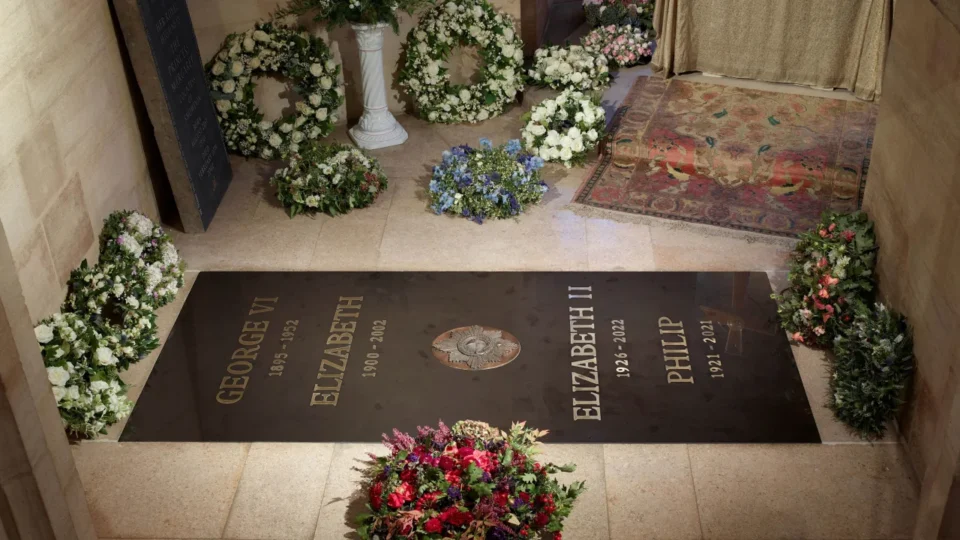 My attention is directed to the only grave in the chapel that had a name that was not of European origin. There, in the Windsor Castle chapel, Prince Alemayehu, the son of the Ethiopian Emperor Tewodros II, was buried.
My attention is directed to the only grave in the chapel that had a name that was not of European origin. There, in the Windsor Castle chapel, Prince Alemayehu, the son of the Ethiopian Emperor Tewodros II, was buried.
The grave of this 18-year-old boy hides a dramatic and sad destiny. Namely, after the defeat in the Battle of Magdala in 1868, Emperor Tewodros II committed suicide and the British took his widow Empress Tiruwork and son Alemayehu as hostages. Tiruwork died on the long journey to the Red Sea coast. Alemayehu, who was a minor at that time, was taken to England where he was presented to Queen Victoria, but being so far from his homeland he was deeply unhappy and was exposed to racist prejudices. Subsequently, he fell ill and died of pneumonia in 1879. Queen Victoria somehow felt remorse for the tragic destiny of this young man, ordered that he should be buried in St. George’s Chapel in Windsor and placed a silver plaque next to his grave in memory of the unfortunate prince.
It is interesting to note that Tewodros II married one of his daughters to a Swiss military engineer. That branch of his family then settled in Russia and their descendant is the famous British actor Peter Ustinov, who is the great-great-grandson of Tewodros II, as he writes about in his 1977 autobiography, “Dear Me”.
I flip through the local newspaper while waiting in a nearby pub for the train that will take me back to London and have a traditional British meat pie with a pint of Guinness. The Guardian has an interesting article about how the property of thousands of people in the north-west of England, thanks to an ancient custom, became part of the king’s property.
The Duchy of Lancaster, which brings huge profits to King Charles III, has collected tens of millions of pounds in recent years under an antiquated system dating back to feudal times. Funds known as “bona vacantia”, owned by people who died without a will or known next of kin, are collected by the duchy. Over the last 10 years, the duchy has raised more than £60 million in funds. It has long been claimed that, after deducting expenses, the proceeds of the bona vacantia are donated to charity, but it turns out that the money was used to repair and furnish the royal family’s private estates.
The Guardian named dozens of people whose money was transferred to the royal estate after they died in towns such as Preston, Manchester, Burnley, Blackburn, Liverpool, Ulverston and Oldham. Several of them lived in run-down estates or social housing that contrasted with the luxurious estates in the duchy that had been renovated with the money they left behind.
Some of their surviving friends were horrified to learn their property was being used to renovate the king’s estate, calling the practice “disgusting”, “shocking” and “immoral”.
Buckingham Palace declined to comment on the allegations. A spokesman for the Duchy of Lancaster said that, following his mother’s death, the King supported a continued policy of using bona vacantia money to “restore and repair qualifying buildings to protect and preserve them for future generations”.
